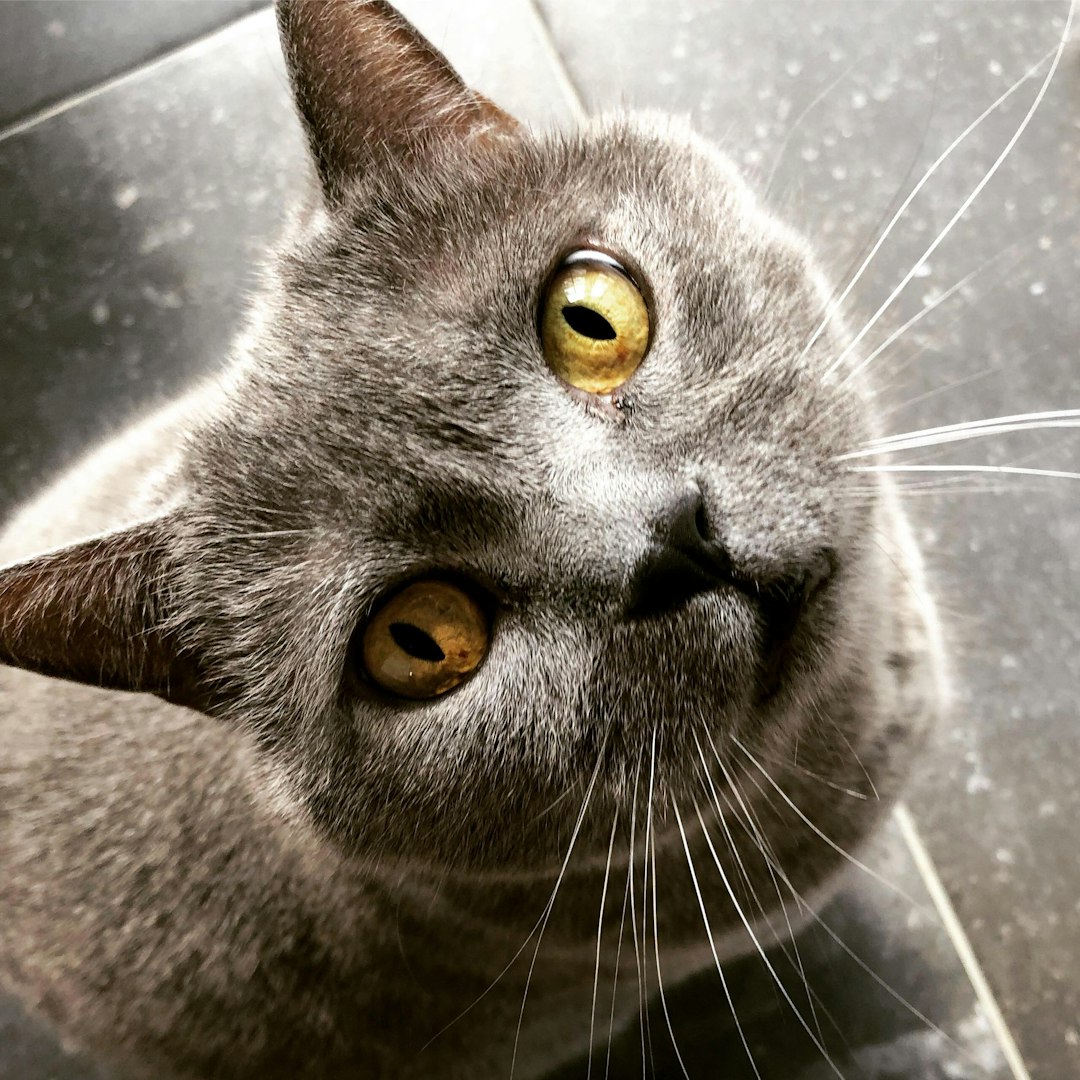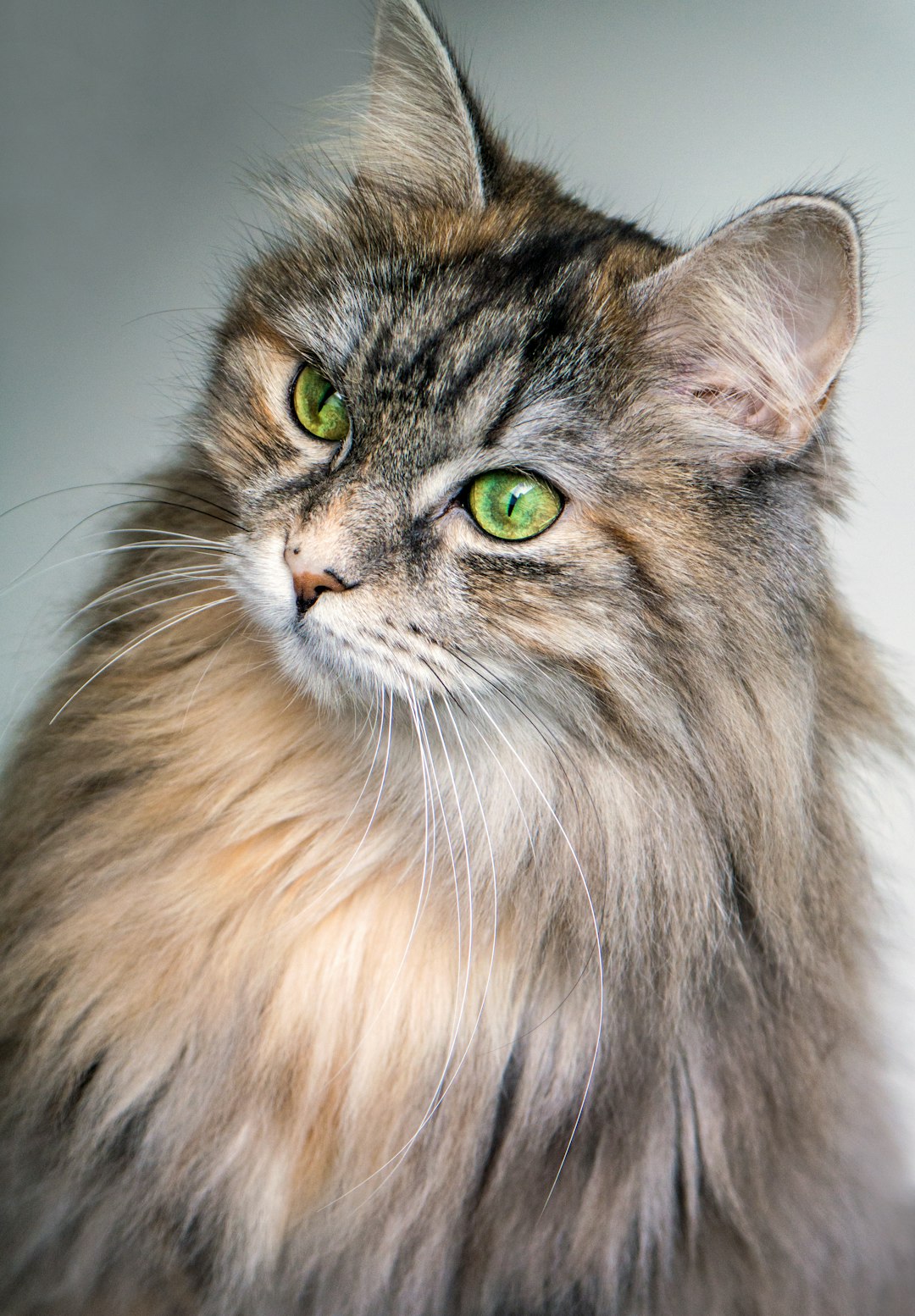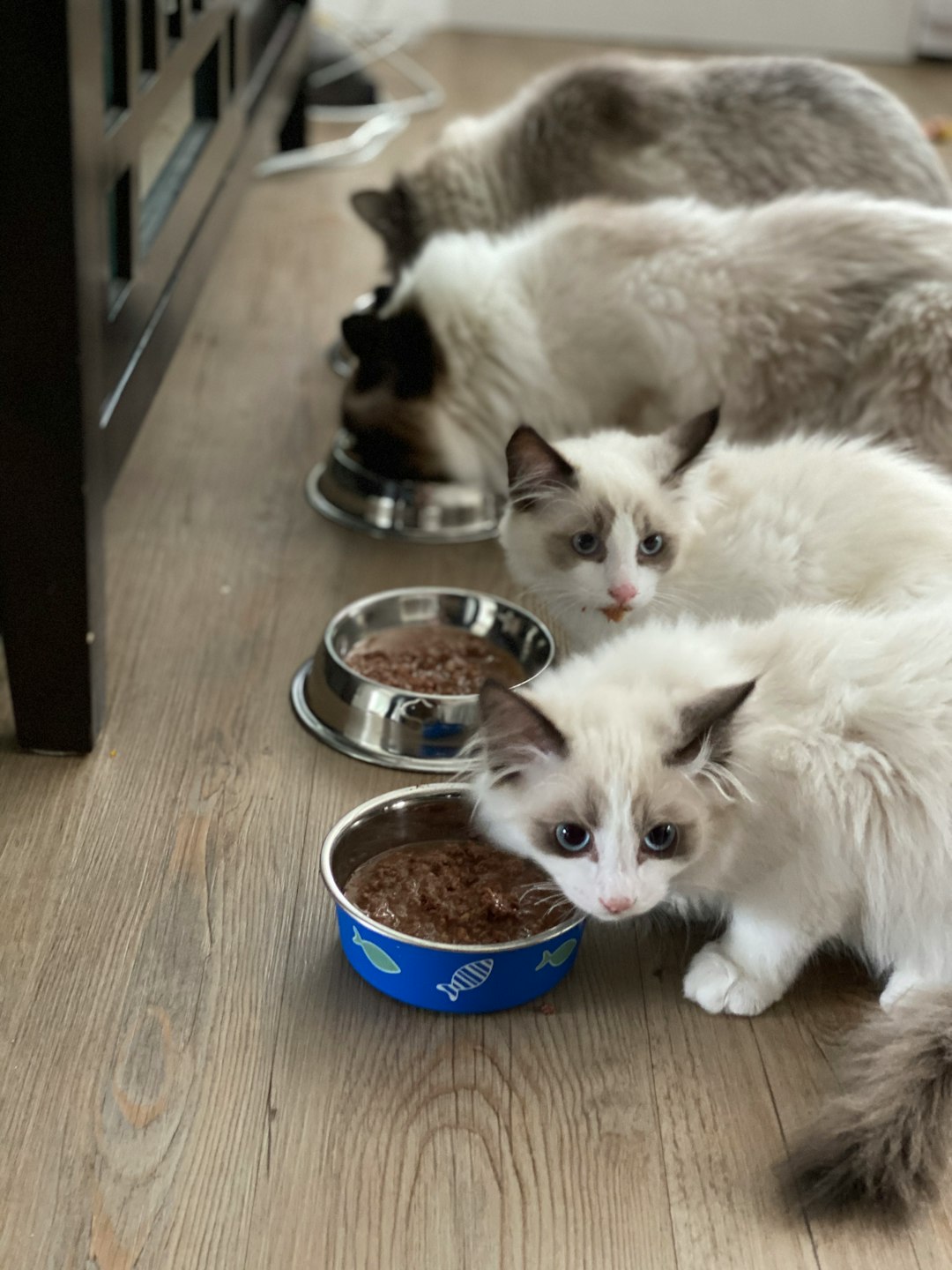In the world of pet care, many cat owners often search for quick solutions to relieve their feline friends from allergies or discomfort. One common medication that surfaces in these conversations is Benadryl, an antihistamine known for its effectiveness in humans. However, using Benadryl for cats without vet prescription raises important questions about safety, appropriate dosages, and potential risks. While it might seem tempting to self-medicate, understanding the nuances of administering this drug to your cat is crucial. In this blog post, we will delve into the fundamentals of Benadryl, explore when it may be appropriate to consider it for your pet, and highlight why consulting with a veterinarian should always be a priority.
Understanding Benadryl: A Brief Overview
What is Benadryl?
Benadryl, also known by its generic name diphenhydramine, is an antihistamine commonly used to alleviate allergic reactions in humans. It works by blocking the effects of histamine, a chemical in the body that contributes to allergy symptoms. When it comes to Benadryl for cats without vet prescription, it’s crucial to understand how this medication can impact felines differently than humans.
Common Uses of Benadryl in Cats
Benadryl may be prescribed for cats experiencing:
- Allergic Reactions: It helps relieve itching, swelling, and other symptoms associated with allergies.
- Motion Sickness: Some pet owners have found Benadryl useful for managing travel anxiety and preventing motion sickness in their cats.
- Sedation: Due to its sedative properties, Benadryl can also be used in certain cases to calm an anxious cat.
Possible Side Effects of Benadryl
While many cats tolerate Benadryl well, potential side effects include:
- Drowsiness: Some cats may become overly lethargic.
- Dry Mouth: Watch out for signs of dehydration and reduced saliva production.
- Urinary Retention: Occasionally, cats may have difficulty urinating after taking Benadryl.
- Vomiting or Diarrhea: In some cases, gastrointestinal upset can occur.
Always consult your veterinarian if you notice any adverse reactions when using Benadryl for cats without vet prescription.
Is It Safe to Use Benadryl for Cats Without Vet Prescription?
Risks of Administering Benadryl Without Guidance
Administering Benadryl without veterinary guidance can pose several risks to your feline companion. Every cat is different, and certain factors, such as age, weight, and underlying health conditions, can significantly impact how they react to medications. Ignoring these considerations can lead to potentially dangerous situations. Common risks include:
- Overdose: Miscalculating the dosage can result in severe toxicity.
- Allergic Reactions: Some cats may be hypersensitive to diphenhydramine, the active ingredient in Benadryl.
- Negative Interactions: Uninformed use may lead to complications if your cat is on other medications.
Understanding Dosage and Administration
When it comes to medication, precise dosing is crucial. Unlike humans, cats metabolize drugs differently. If caught in a moment of distress, pet owners might be tempted to self-medicate without proper dosage knowledge. Listed below are some key considerations:
- Body weight: Dosing usually depends on the cat’s weight. A standard dose is often 1 mg per pound.
- Formulation: Liquid Benadryl may contain additional ingredients, like alcohol or sugar, that could be harmful.
- Timing: Knowing when to administer is as essential as how much—timing can affect its efficiency.
Signs of an Adverse Reaction
If you decide to administer Benadryl for cats without vet prescription, it’s vital to remain vigilant for any signs of an adverse reaction. Monitor your cat closely for:
- Excessive drowsiness or lethargy.
- Vomiting or diarrhea.
- Difficulty breathing or swelling.
- Unusual scratching or agitation.
By understanding these risks and effects, you can make informed decisions regarding your cat’s health and well-being.
When Might You Consider Benadryl for Cats Without Vet Prescription?
Allergic Reactions in Cats
Cats can suffer from various allergic reactions just like humans. These allergies may manifest due to environmental factors such as pollen, dust mites, or certain foods. Symptoms often include:
- Itchy skin: Your cat might scratch excessively or show signs of discomfort.
- Runny eyes or nose: Watery discharge could signal an allergic response.
- Swelling: Check for any abnormal swelling around the face or paws.
If you notice these symptoms, Benadryl can help alleviate their discomfort.
Situations Requiring Benadryl
There are specific scenarios where administering Benadryl may be warranted, even without prior veterinary consultation. Consider using it in cases such as:
- Travel anxiety: Cats often feel stressed during travel.
- Insect stings or bites: If your cat has been stung, Benadryl can help reduce swelling and the associated discomfort.
- Minor allergic reactions: Such as reactions to grooming products or environmental allergens.
In these situations, Benadryl may serve as a quick relief option.
Alternative Solutions to Consider
If you’re unsure about administering Benadryl, various alternatives can also effectively address allergies and anxiety in cats. Options to explore include:
- Natural remedies: Herbal supplements can manage mild allergies without medication.
- Antihistamines designed for pets: Some products are specifically formulated for felines.
- Modified environment: Implementing air purifiers or changing diet may also help alleviate allergy symptoms.
Ultimately, it’s essential to assess your cat’s specific needs and consider Benadryl for cats without vet prescription only after weighing all options.
Dosage Guidelines for Benadryl in Cats
When considering Benadryl for cats without vet prescription, it’s vital to adhere to specific dosage guidelines to ensure your feline friend’s safety.
Recommended Dosage Based on Weight
The dosage of Benadryl is typically based on your cat’s weight. A general guideline is:
- Under 5 lbs: 1 mg
- 5-10 lbs: 2 mg
- 10-15 lbs: 2.5 mg
- 15-20 lbs: 5 mg
Tip: Always round to the nearest available tablet or liquid dose.
Forms of Benadryl Suitable for Cats
Benadryl is available in several forms. However, not all forms are appropriate for cats:
- Tablets: Standard tablets are often easier to administer.
- Liquid: Make sure the liquid is alcohol-free and does not contain any additional ingredients like xylitol, which is toxic to cats.
- Chewable Tablets: Check for artificial sweeteners, as some can be harmful.
How to Administer Benadryl Safely
Administering Benadryl correctly is crucial. Here’s how to do it safely:
- Administer with Food: Giving Benadryl with food can help avoid gastrointestinal upset.
- Use a Syringe for Liquid: If using liquid form, a syringe can help ensure accurate dosage.
- Monitor Your Cat: After giving the medication, observe your cat for any adverse reactions or side effects. If any unusual symptoms arise, seek immediate veterinary assistance.
Following these guidelines helps ensure that using Benadryl for cats without vet prescription is as safe and effective as possible.
Alternatives to Benadryl for Allergies in Cats
Over-the-Counter Options
If you’re seeking alternatives to Benadryl for cats without vet prescription, there are several over-the-counter medications that can help manage your cat’s allergy symptoms. However, it’s essential to ensure that these medications are specifically formulated for cats. Here are some common options:
- Cetirizine (Zyrtec): Often regarded as a safer antihistamine for cats, cetirizine can alleviate symptoms of itching and sneezing.
- Loratadine (Claritin): Another antihistamine that is considered safe for cats, helping reduce allergy-related discomfort.
- Hydrocortisone Cream: This topical solution can be applied to localized areas to relieve itching caused by allergic reactions.
Home Remedies for Allergies
In addition to over-the-counter medications, several home remedies can effectively soothe your cat’s allergy symptoms. Always consult your vet before trying new treatments. Some popular options include:
- Oatmeal Baths: Adding colloidal oatmeal to your cat’s bath can help soothe irritated skin.
- Cold Compresses: Applying a cold compress can relieve swelling and itching, especially around the face and paws.
- Omega-3 Fatty Acids: Incorporating supplements or food rich in omega-3s may improve skin health and reduce inflammation.
Consulting a Veterinarian for Alternatives
Ultimately, while it may be tempting to use Benadryl for cats without vet prescription, it’s crucial to consult a veterinarian for professional guidance. A vet can:
- Diagnose the Allergy: Identifying the root cause of your cat’s allergies is essential for effective treatment.
- Suggest Tailored Alternatives: A vet can recommend specific medications or treatments based on your cat’s health history and needs.
- Ensure Safety: Consulting ensures that any alternative you choose is safe and appropriate for your cat’s unique situation.
By exploring all these alternatives and working closely with a veterinarian, you can manage your cat’s allergies effectively and safely.
Potential Drug Interactions with Benadryl in Cats
When considering Benadryl for cats without vet prescription, it is crucial to be aware of potential drug interactions that could compromise your cat’s health. Not all medications mix well, and understanding these interactions is essential for ensuring your feline friend remains safe and healthy.
Medications to Avoid
- Other Antihistamines: Combining Benadryl with other antihistamines may cause sedation or amplify side effects.
- Sleep Aids: Any sedatives or sleep aids can interact negatively, increasing drowsiness and impairing motor function.
- CNS Depressants: Medications affecting the central nervous system, such as certain pain relievers, can heighten sedative effects when taken with Benadryl.
Recognizing Warning Signs
When administering Benadryl for cats without vet prescription, watch for the following warning signs of potential drug interactions:
- Excessive Sedation: Over-sleeping or lethargy beyond normal behavior.
- Loss of Coordination: Difficulty in walking or stumbling.
- Unusual Agitation: Nervousness or restlessness that appears to be out of character.
Importance of Full Disclosure to Your Vet
It’s vital to provide your veterinarian with a comprehensive list of all medications your cat is currently taking. This includes:
- Over-the-counter medications
- Supplements and herbal remedies
- Prior prescriptions
Being transparent about your cat’s medical history and current treatments helps your vet identify potential drug interactions, ensuring the safe use of Benadryl and other medications. Always consult a professional before administering any medication to your pet. Your cat’s health depends on making informed decisions.
Understanding the Risks of Self-Medicating Your Cat
Self-medicating your cat can pose significant dangers, which every pet owner should consider seriously. While it may seem convenient to use Benadryl for cats without vet prescription, the risks involved exceed the benefits. Here are some critical areas to be aware of:
Consequences of Incorrect Dosing
- Underdosing: This may fail to alleviate your cat’s symptoms, leading to prolonged discomfort.
- Overdosing: A potentially fatal mistake. Signs of overdose may include lethargy, agitation, or even seizures. Always measure dosages carefully.
- Individual Variation: Different cats react differently to medications, regardless of weight or breed. What works for one may not work for another.
Long-term Effects of Frequent Use
- Dependency: Cats can develop a need for medication, potentially leading to withdrawal symptoms if it’s suddenly stopped.
- Health Complications: Continuous use may mask underlying health issues that need attention, delaying crucial treatment.
- Side Effects: Regular self-medication can introduce adverse effects like sedation, gastrointestinal upset, or disrupted appetite.
Legal and Ethical Considerations
- Regulatory Risks: Administering medication without a proper vet prescription could violate local laws.
- Ethical Responsibility: As a pet owner, you are responsible for your cat’s well-being; self-medicating can compromise this responsibility.
In summary, self-medicating your cat, particularly with Benadryl for cats without vet prescription, comes with inherent risks that can affect their health and safety. Always consult a veterinarian to ensure proper care.
How to Monitor Your Cat After Administering Benadryl
Administering Benadryl for cats without vet prescription can bring relief, but it’s crucial to monitor your cat closely afterward to ensure their safety and wellbeing. Here’s how you can effectively keep an eye on them post-medication.
Signs to Watch For
After giving Benadryl, observe your cat for these particular signs:
- Lethargy: Excessive tiredness or lack of energy may indicate an adverse reaction.
- Hyperactivity: Paradoxically, some cats may become overly energetic—this should be noted.
- Appetite Changes: Monitor if your cat shows a marked increase or decrease in appetite.
- Vocalization: Pay attention to any unusual meowing or signs of distress.
- Gastrointestinal Issues: Look for vomiting or diarrhea, which might signify intolerance to the medication.
Creating a Safe Environment
To make sure your cat remains comfortable and safe after taking Benadryl, consider these steps:
- Limit Space: Keep them in a quiet, confined area to reduce stress and prevent any accidents.
- Remove Hazards: Ensure no dangerous items (like small toys or cords) can endanger them during potential drowsiness.
- Hydration: Place fresh water nearby and encourage drinking, as Benadryl can cause dryness.
When to Seek Immediate Help
Know when to act. If you notice any of these concerning symptoms, contact your veterinarian immediately:
- Severe Lethargy: If your cat seems unable to wake or respond.
- Swelling: Pay attention to any signs of facial or body swelling, which may indicate a serious allergic reaction.
- Difficulty Breathing: Signs of respiratory distress require urgent medical attention.
- Seizures: Any seizure activity should be treated as a veterinary emergency.
Monitoring your cat after giving Benadryl for cats without vet prescription is essential for ensuring their health and safety. By staying alert to their condition, you can act swiftly if anything seems amiss.
Veterinarian Consultation: Why It’s Essential
Benefits of Professional Guidance
Consulting with a veterinarian is crucial when contemplating Benadryl for cats without vet prescription. Professionals provide invaluable insights, including:
- Noticing Underlying Conditions: Vets can identify potential allergies or health issues that need addressing.
- Correct Dosage: They offer personalized dosage recommendations tailored to your cat’s weight and health status.
- Safe Alternatives: A vet may suggest safer or more effective treatments that are appropriate for your pet’s specific needs.
Common Questions to Ask Your Vet
Before administering Benadryl or any medication, consider asking your vet the following questions:
- Is this medication suitable for my cat’s health condition?
- What are the potential side effects I should watch for?
- Can I combine it with other medications my cat is taking?
- How frequently should I administer this medication to my cat?
Preparing for Your Veterinary Visit
To maximize your veterinary consultation, come prepared by:
- Listing Symptoms: Write down your cat’s symptoms, when they started, and any changes in behavior.
- Reviewing History: Summarize your cat’s medical history, including past allergies or reactions to medications.
- Bringing Medications: If your cat is currently on medication, bring it along to discuss possible interactions.
Understanding the importance of veterinary consultations ensures that your cat receives the safest and most effective care possible. Always consider professional advice before resorting to over-the-counter medications like Benadryl.
Benadryl for Cats Without Vet Prescription: A Summary of Key Points
Final Thoughts on Safety
When considering the use of antihistamines like Benadryl for your feline friends, safety is paramount. While some cat owners may find relief in providing Benadryl, it is crucial to remember that each cat is unique. Factors such as age, weight, and underlying health conditions can significantly impact how your cat reacts to this medication. Always weigh the potential benefits against the risks before administering any drug.
Important Reminders for Cat Owners
- Consultation is crucial: Even if you plan to use Benadryl for cats without vet prescription, talking to a veterinarian first is highly recommended.
- Observe your cat: After administering the medication, keep a close watch for any unusual behaviors or side effects. Symptoms like drowsiness or hyperactivity may indicate an adverse reaction.
- Dosage matters: If you decide to proceed, ensure you are informed about the correct dosage based on your cat’s weight.
Encouragement to Seek Professional Help
Ultimately, while some home remedies may provide temporary relief, there is no substitute for professional guidance. A veterinarian can offer personalized advice tailored to your cat’s specific needs. By doing so, you can avoid potential complications that arise from self-medicating. Taking the time to consult with your vet ensures that your furry companion receives safe and effective care tailored just for them.
Frequently Asked Questions
Can I give my cat Benadryl without a vet’s prescription?
While Benadryl (diphenhydramine) is available over-the-counter, it’s crucial to consult with a veterinarian before administering it to your cat. Cats have different tolerances and metabolic rates compared to humans, and what may be safe for one cat could be harmful to another. A vet can provide guidance on the appropriate dosage, potential side effects, and whether it’s the right solution for your cat’s symptoms.
What symptoms can Benadryl help alleviate in cats?
Benadryl is often used to treat allergy symptoms in cats, such as itching, sneezing, and skin irritations. It can also aid in alleviating motion sickness, which may be useful during travel, or calming anxiety in stressful situations like vet visits or fireworks. However, it’s important to note that Benadryl should only be used for these purposes under professional guidance, as it may not be suitable for all cats.
What are the side effects of giving Benadryl to cats?
Possible side effects of Benadryl in cats include drowsiness, dry mouth, urinary retention, and gastrointestinal upset. Some cats may also experience a paradoxical reaction, resulting in increased hyperactivity. If your cat exhibits any unusual behavior or significant lethargy after taking Benadryl, it is essential to contact your veterinarian immediately to assess whether it is experiencing an adverse reaction.
How should I administer Benadryl to my cat?
If your veterinarian has prescribed Benadryl, ensure you follow their specific dosage instructions. The most common form is liquid, which can be administered with a syringe or mixed with food. Some pet owners may use chewable tablets, but it’s essential to confirm that the formulas are free from any harmful additives. Always monitor your cat after administration to observe for any side effects or reactions.
Are there alternatives to Benadryl for treating cats?
Yes, there are several alternatives to Benadryl for treating allergies or anxiety in cats. Your veterinarian may recommend antihistamines specifically formulated for pets or alternatives such as steroids for severe allergies. In cases of anxiety, behavioral modifications, calming supplements, or prescription medications specifically designed for feline use may be effective. It’s always best to consult your vet to discuss personalized treatment plans.



